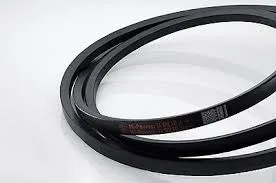- Arabic
- French
- Russian
- Spanish
- Portuguese
- Turkish
- Armenian
- English
- Albanian
- Amharic
- Azerbaijani
- Basque
- Belarusian
- Bengali
- Bosnian
- Bulgarian
- Catalan
- Cebuano
- Corsican
- Croatian
- Czech
- Danish
- Dutch
- Afrikaans
- Esperanto
- Estonian
- Finnish
- Frisian
- Galician
- Georgian
- German
- Greek
- Gujarati
- Haitian Creole
- hausa
- hawaiian
- Hebrew
- Hindi
- Miao
- Hungarian
- Icelandic
- igbo
- Indonesian
- irish
- Italian
- Japanese
- Javanese
- Kannada
- kazakh
- Khmer
- Rwandese
- Korean
- Kurdish
- Kyrgyz
- Lao
- Latin
- Latvian
- Lithuanian
- Luxembourgish
- Macedonian
- Malgashi
- Malay
- Malayalam
- Maltese
- Maori
- Marathi
- Mongolian
- Myanmar
- Nepali
- Norwegian
- Norwegian
- Occitan
- Pashto
- Persian
- Polish
- Punjabi
- Romanian
- Samoan
- Scottish Gaelic
- Serbian
- Sesotho
- Shona
- Sindhi
- Sinhala
- Slovak
- Slovenian
- Somali
- Sundanese
- Swahili
- Swedish
- Tagalog
- Tajik
- Tamil
- Tatar
- Telugu
- Thai
- Turkmen
- Ukrainian
- Urdu
- Uighur
- Uzbek
- Vietnamese
- Welsh
- Bantu
- Yiddish
- Yoruba
- Zulu
ספט . 13, 2024 09:34 Back to list
timing belts
Understanding Timing Belts Essential Components for Engine Performance
Timing belts are crucial components in the functioning of internal combustion engines. They play a vital role in synchronizing the movements of the engine's camshaft and crankshaft, ensuring that the engine's valves open and close at the appropriate times during each cylinder's intake and exhaust cycles. This synchronization is key to the efficient operation of the engine and directly impacts its performance and longevity.
The timing belt is typically made from a durable rubber composite with high-tensile strength fibers, designed to withstand the extreme conditions inside an engine. Modern timing belts are equipped with teeth or notches along their inner surface, allowing them to grip the sprockets of the camshaft and crankshaft securely. This design helps prevent slippage and ensures that the engine components work in harmony.
One of the significant advantages of using a timing belt over a timing chain is the reduced noise and weight. Timing belts are quieter in operation, which contributes to a more pleasant driving experience. Additionally, because they are lighter, they can improve overall engine efficiency, leading to better fuel economy.
timing belts

However, like all mechanical components, timing belts do have a finite lifespan. Most manufacturers recommend replacing the timing belt every 60,000 to 100,000 miles, though this can vary depending on the specific vehicle and driving conditions. Failure to replace a worn or damaged timing belt can lead to severe engine damage. If a timing belt breaks, it can cause the pistons to collide with the valves, resulting in bent valves, damaged pistons, and costly repairs.
Routine maintenance is essential for ensuring the timing belt's longevity. It is advisable to have the timing belt and its associated components, such as the tensioner and idler pulleys, inspected regularly. Signs of wear can include cracks, fraying, or missing teeth. Addressing these issues proactively can save car owners from the headache of unexpected engine failures.
In conclusion, timing belts may be small components, but they have a significant impact on the performance and reliability of an engine. Understanding their function and maintenance requirements is essential for every vehicle owner. By paying attention to the condition of the timing belt, drivers can ensure that their engines run smoothly and efficiently for years to come.
-
Korean Auto Parts Timing Belt 24312-37500 For Hyundai/Kia
NewsMar.07,2025
-
7PK2300 90916-T2024 RIBBED BELT POLY V BELT PK BELT
NewsMar.07,2025
-
Chinese Auto Belt Factory 310-2M-22 For BMW/Mercedes-Benz
NewsMar.07,2025
-
Chinese Auto Belt Factory 310-2M-22 For BMW/Mercedes-Benz
NewsMar.07,2025
-
90916-02660 PK Belt 6PK1680 For Toyota
NewsMar.07,2025
-
drive belt serpentine belt
NewsMar.07,2025

